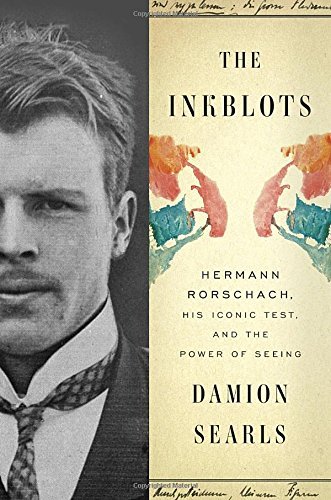 The Inkblots: Herman Rorschach, Hist Iconic Test, and the Power of Seeing, by Damion Searls
The Inkblots: Herman Rorschach, Hist Iconic Test, and the Power of Seeing, by Damion Searls
4/5
To say this book is a biography of the man behind the Rorschach test only gives half the story. It is also a biography of the test itself.
Searls begins by exploring the life and influences of Hermann Rorschach, his upbringing, schooling, artistic work, siblings, love life. He takes the reader through the early musings that led to the “inkblots.” I appreciate the amount of time spent exploring how psychiatrists were working in the era, how they were using actual inkblots and free association and how Freud, Jung, Bleuler, and dozens of other psychologists and psychiatrists were changing the field rapidly. The author tied together the ways art was evolving and the way psychology was evolving in such a way that made the Rorschach test seem almost like a fait accompli.
The part I loved the most about the explanation of Rorschach’s development of his theories was his explanation of extroversion and empathy. Jung’s ideas of extroversion are the ones we have now, but I really related to how Rorschach explained the mindset it takes to properly empathize–how you have to feel outwards in order to do it.
The second half of the book takes a look at the evolution of the test. Because Rorschach died young, he wasn’t able to do as much modification, adaptation, or testing to see the various ways he could use his “experiment” to elicit insight. It also means that the test was used and misused by practitioners hoping to get information that it was never intended to find, in ways it was never intended to be used (such as the multiple choice test).
In the second half of the book, I was particularly struck by the work done to quantify and validate the test. My background is in medical research (medical librarian), so I always look for where a study is in the evidence hierarchy and how its been validated. (I’m waiting for a friend who is a behavioral scientist to read this book to see if she likes this part too or if it exasperates her). I really appreciated knowing that there is validity and reproduciblility in this test, but that it can also be used to further lead conversation within a therapy session.
I acknowledge there are some parts of this book that are probably a bit dry–explanations of the coding of the test in particular. However, I think it was important to include to understand that the Rorschach inkblots aren’t a random, see anything you want, no boundaries, free association only, you might as well be looking at clouds kind of test. It does show that these are intentional, with a strong theory behind them.
This book was written how I adore biographies to be written: it considers the world and the life of a person with a brilliant idea. Then it considers how that idea changed the world and other lives after that person was no longer in control of it. Recommended to anyone interested in psychology, personality, or even Russia and Switzerland in the early 1900s.
